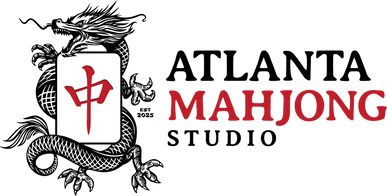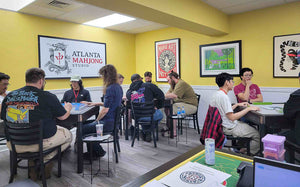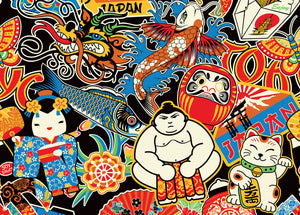From Hong Kong to Riichi: A Quick Tour of the Asian Mahjong Styles We Play
Mahjong is a four-player game with 144 tiles, a surprising amount of strategy, and an oddly satisfying clack when you shuffle. It's a mix of luck, memory, timing, and social energy — like Gin Rummy’s more tactile, more social cousin. The core goal across styles is the same: build a complete hand made up of four sets (like three of a kind or a run of three) and one pair. How you get there? That depends entirely on the style you’re playing.
At Atlanta Mahjong Studio, we focus on Asian-style mahjong — and yes, there’s more than one kind. Here's a quick overview of the styles we play, why they’re fun, how tricky they are to learn, and what makes each unique. Whether you're new to the game or grew up playing a specific version with your family, there's something here for you.
Hong Kong Old Style
Complexity: ★☆☆☆☆ (Beginner-friendly)
Played on: Traditional or automatic tables
This is our house style at the studio — the classic, fast-paced, easy-to-learn version many Cantonese-speaking families grew up with. You win by completing four sets and a pair, and if you’re playing casually, that’s really all you need.
Hong Kong Old Style shines in its simplicity. Scoring is straightforward, hands move fast, and there's a lot of room to learn without getting overwhelmed. For new players, it's the best place to start. For experienced ones, it's the perfect reset: nostalgic, familiar, and endlessly replayable.
Japanese (Riichi)
Complexity: ★★★★☆ (Strategic minds welcome)
Played on: Traditional or automatic Riichi table with score tracking
Riichi adds layers. Like, a lot of layers. You can’t just build a hand — it has to include a valid scoring pattern called a “yaku,” and there's a whole catalog of them to choose from. There’s also the dramatic Riichi call itself, hidden Dora bonus tiles, defensive play strategies, and a complex scoring system.
If you enjoy poker-like tension, betting mechanics, or anime-style declarations of victory, Riichi is your game. It’s popular among strategy lovers and players who enjoy the psychological side of mahjong.
Filipino Mahjong
Complexity: ★★☆☆☆ (Fast and social)
Played on: Traditional or automatic tables
Filipino mahjong varies a bit by household, but the core vibe is fun, fast, and full of wildcards — literally. Some versions include “joker” tiles that act like wilds, and scoring is often quick and informal. The game is energetic and great for friendly competition, especially if you're not a fan of ultra-strict rulebooks.
At the studio, Filipino-style games are often lively, collaborative, and a little chaotic in the best way. If you grew up playing in the Philippines, you’ll feel right at home.
Taiwanese Mahjong
Complexity: ★★★☆☆ (Big hands, big fun)
Played on: Traditional tables or automatic tables
Taiwanese mahjong uses 16 tiles per hand instead of 13, which means you're building five sets and a pair. More tiles = more possibilities = more chaos. It’s fast-paced and favors bold play — many hands rack up big points quickly, and in some cases, multiple players can win off a single discard.
If you like big hands and dramatic comebacks, or you’ve got a group of adventurous players, Taiwanese style is a great pick.
A Quick Comparison
| Style | Complexity | Played On | Best For |
|---|---|---|---|
| Hong Kong | ★☆☆☆☆ | Manual/Auto | Beginners, fast games |
| Japanese Riichi | ★★★★☆ | Auto (Riichi) | Strategic players, anime fans |
| Filipino | ★★☆☆☆ | Manual/Auto | Social play, house rules |
| Taiwanese | ★★★☆☆ | Manual/Auto | Big hands, bold moves |
So Which Should You Try?
That depends. Want to learn the basics? Start with Hong Kong Old Style. Looking for drama, tension, and a bit of chaos? Try Riichi or Taiwanese. Want something nostalgic and social? Filipino might be your thing.
At the studio, our Hong Kong tables default to that style (it’s our “house rules”), but if you’d like to try something different, just book a full table and pick your preferred style. We love helping players explore new variations — and if you grew up playing one kind, trying another is like seeing an old game in a new light.
Atlanta has a big, diverse mahjong community. Our studio was built to give it a consistent, welcoming home — and to introduce more people to the joy of the game. If you’re curious, come play. If you’re experienced, come teach us something. If you’re somewhere in between… perfect.
The tiles are ready.






